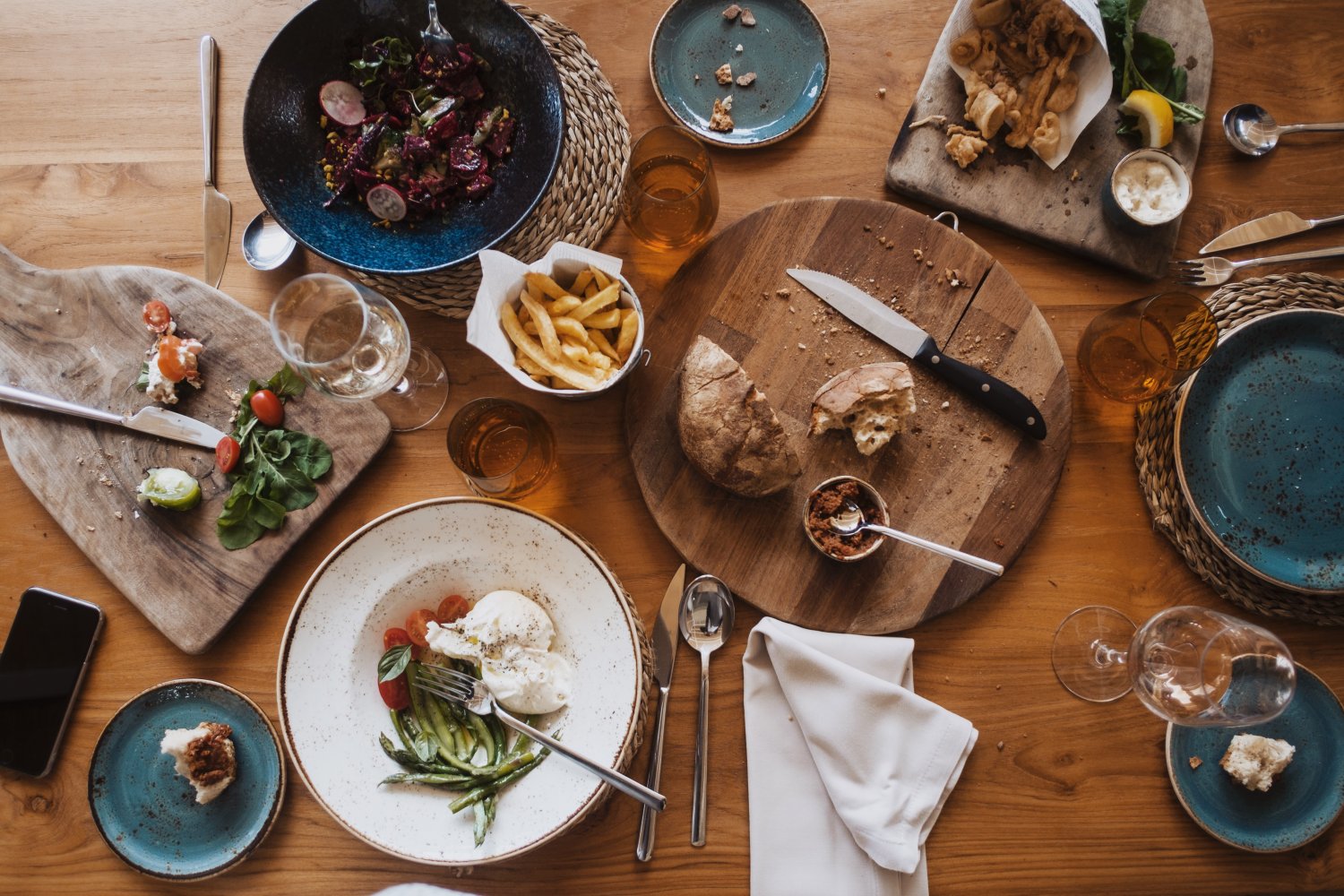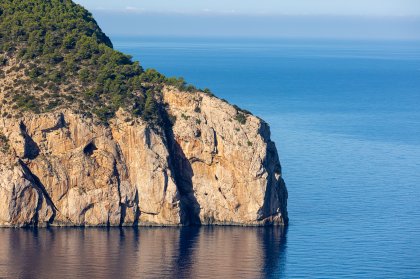Los platos típicos ibicencos son, por lo general, sencillos pero apetitosos, que se preparan como plato único y que reflejan la disponibilidad estacional de los productos locales y las influencias históricas de la isla. La carne (tradicionalmente de cerdo o cordero) y el marisco son habituales, complementados con platos de arroz y ensaladas frescas. Se desperdician muy pocos ingredientes y la mayoría de las sobras se vuelven a utilizar para hacer una variedad de sopas y platos de arroz.
En el pasado anterior al turismo, las islas, como muchas partes de España, sufrían habitualmente períodos de gran escasez y penuria. Cuatro o cinco días a la semana, los isleños vivían con una dieta de subsistencia, complementada en gran medida con legumbres, en especial, garbanzos, algarrobas y lentejas.
Una vez a la semana podían tomar un plato de arroz, y solo los domingos pescado o carne. Muchos de los platos favoritos de hoy en día se preparan para compartir en días de celebración y fiesta, lo que refleja la necesidad de extender los ingredientes disponibles lo máximo posible.
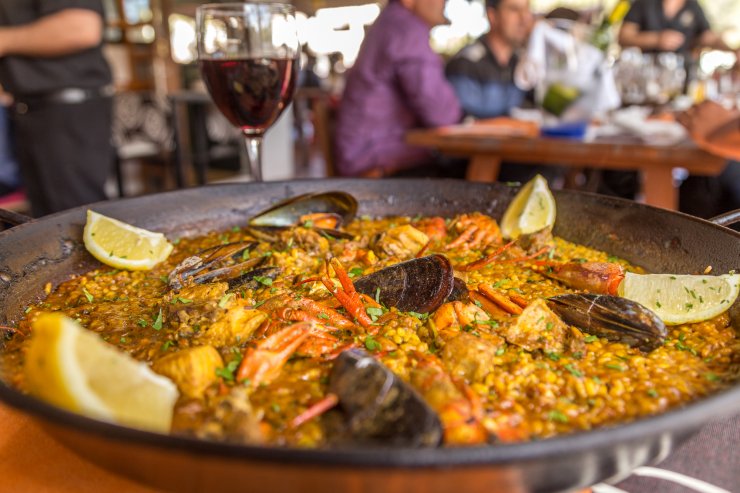
Aunque en Ibiza el suelo puede ser bastante árido en algunos lugares, las zonas centrales de la isla son muy fértiles y productivas. Muchas huertas producen excelentes patatas, tomates, cebollas, melones, uvas y, por supuesto, todo tipo de cítricos, membrillos, higos, aceitunas y almendras. Ibiza también se beneficia de una gran abundancia de hierbas silvestres, hinojo, setas y espárragos. Muchos de los restaurantes rurales siguen insistiendo en cultivar y utilizar la mayor cantidad posible de sus propios productos.
A continuación, te presentamos nuestras sugerencias de comidas que debes probar durante tu visita a Ibiza.
Si deseas ver el resto de nuestra serie de artículos sobre la gastronomía ibicenca y formenterense, haz clic en los siguientes enlaces y descubre más sobre el delicioso pasado y presente culinario de las islas.
PARTE 1 DESAYUNOS Y MERIENDAS
PARTE 3 BEBIDAS
Entrantes
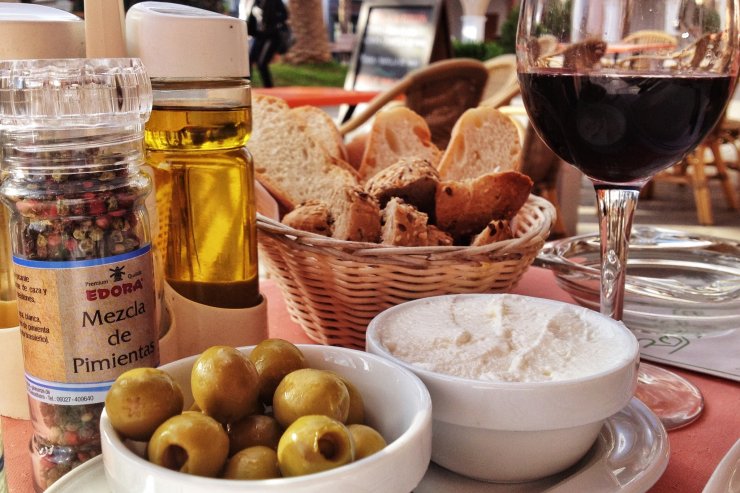
El alioli (que en catalán significa simplemente "ajo y aceite") es una emulsión hecha con ajo machacado en un mortero, al que se le añade lentamente aceite y sal con una batidora. Las texturas y los sabores pueden variar según el restaurante: desde sutiles y ligeros hasta densos e intensos. En Ibiza, el alioli se disfruta untado sobre pa pagès, un pan denso y artesanal, que en un principio parece poco habitual para los europeos del norte acostumbrados a los horneados más ligeros.
Sin embargo, su combinación con el alioli pronto se vuelve muy apetecible y, con un bol de aceitunas locales, es uno de los sabores para llevar a casa de Ibiza. Te lo ofrecerán en casi todos los restaurantes de Ibiza, pero no te sorprendas si te lo añaden a la cuenta al final de la comida.
 Ensalada payesa
Ensalada payesa
La calidad y abundancia de frutas y verduras sorprende a menudo a quienes visitan España: cebollas, tomates, pimientos y sandías de gran tamaño. La típica ensalada payesa de Ibiza y Formentera contiene una combinación de pimientos rojos y verdes, tomates, cebolla, patatas hervidas, huevos cocidos, aceitunas, y se remata con una capa de costras de pan y bacalao seco en aceite.
En la mayoría de los restaurantes tradicionales, se puede encontrar una variante, pero creemos que te puede gustar probar la que preparan en los restaurantes Ca Na Pepeta (en la carretera de San Juan) o Cas Payes (en la carretera de San Carlos).
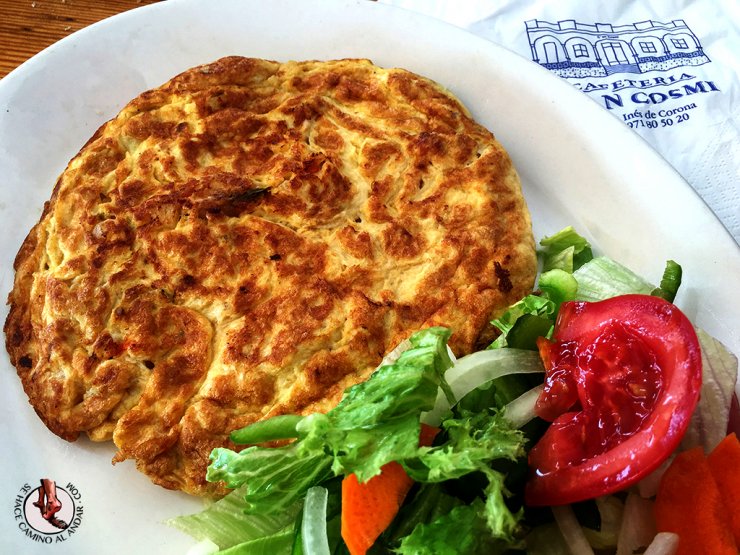
Tortilla de patata: Si estás dando un paseo por el campo y pasas por el precioso pueblo de Santa Inés, verás la terraza del restaurante Can Cosmi repleta de comensales compartiendo un saludable almuerzo, mientras disfrutas de la tranquilidad del campo idílico. Hecha a medida, sin importar el tamaño de tu grupo, esta sencilla y tradicional tortilla hecha con patatas y cebollas locales, así como pimientos rojos y verdes, es un plato muy apreciado. Firme por fuera y jugosa por dentro, se puede disfrutar durante todo el año.
Panes y pasteles
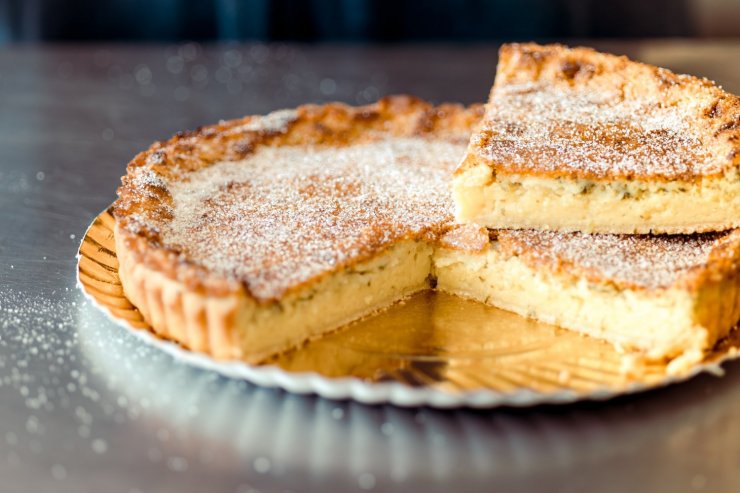
La isla tiene una rica tradición en la elaboración de panes y pasteles. Ya sean dulces auténticos como el flaó, las orelletes y las magdalenas, panes como el pan payés (pan de masa madre típico local) o platos salados como el sofrit pagés, la frita de pulpo, el arroz de matanza y el bullit de peix, todos forman parte esencial del descubrimiento del patrimonio culinario de Ibiza.
Y no hay mejor lugar para probar estas delicias caseras que el Forn Can Bufí, que se enorgullece de seguir fielmente los productos y recetas locales de la isla. Elaborado con productos locales de calidad como queso fresco, hierbabuena y limón, su flaó, la tarta de queso ibicenca por excelencia, es irresistible. Perfecto para llevar, para encargos personalizados para celebraciones o para servicios de catering (solo comida), ofrece a sus clientes el auténtico sabor de Ibiza.
¿Necesitas más pruebas? Forn Can Bufí ha sido galardonado con el prestigioso premio local Ibiza Sabors por su firme compromiso con el uso de productos locales.
Platos principales
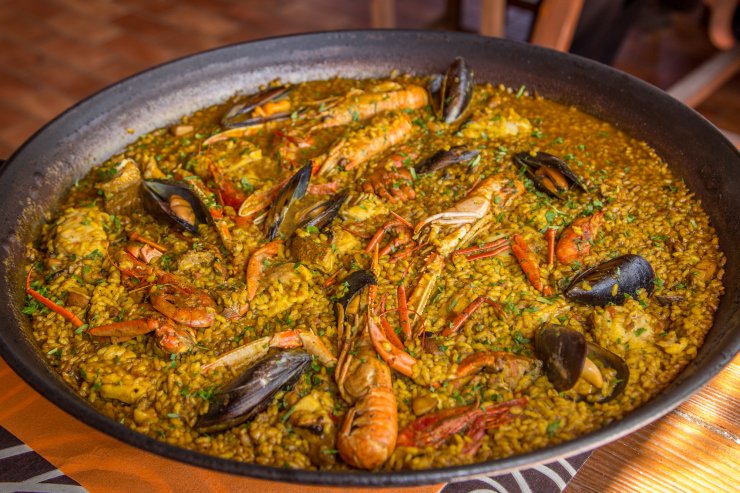
Pescado
Paella (en la foto de arriba): Ninguna visita a Ibiza estaría completa sin un almuerzo largo y relajado de paella de marisco, la versión ibicenca de la clásica paella valenciana. Y no hay mejor manera de disfrutarla que compartiéndola con amigos junto al mar. Obviamente, las recetas y la calidad pueden variar, aunque casi todos los restaurantes afirmarán que preparan la mejor paella de Ibiza.
Una buena paella debe tener un color dorado debido a la sutil incorporación de azafrán, no el amarillo chillón indicativo de los colorantes artificiales, y con una sustanciosa base crujiente y caramelizada. Algunas de nuestras paellas favoritas se sirven casi todo el año en Es Nautic en San Antonio, Restaurante Sa Caleta en la costa sur, CBbC Marina en Santa Eulalia y Hoyo 19 cerca de Cala Llonga. Echa un vistazo a nuestro artículo sobre paellas y arroces con muchas más recomendaciones de restaurantes en toda la isla.
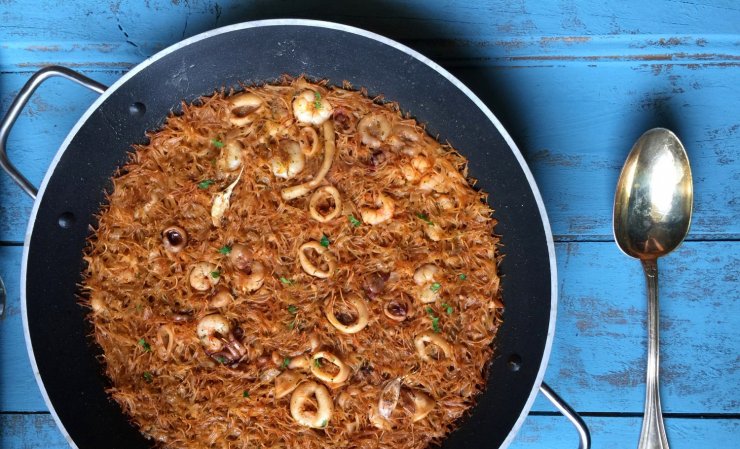
Fideuà: una versión muy popular que básicamente tiene los mismos ingredientes que la paella, pero se prepara con fideos en lugar de arroz. Muchos lugareños afirman que prefieren esta versión al plato de arroz.
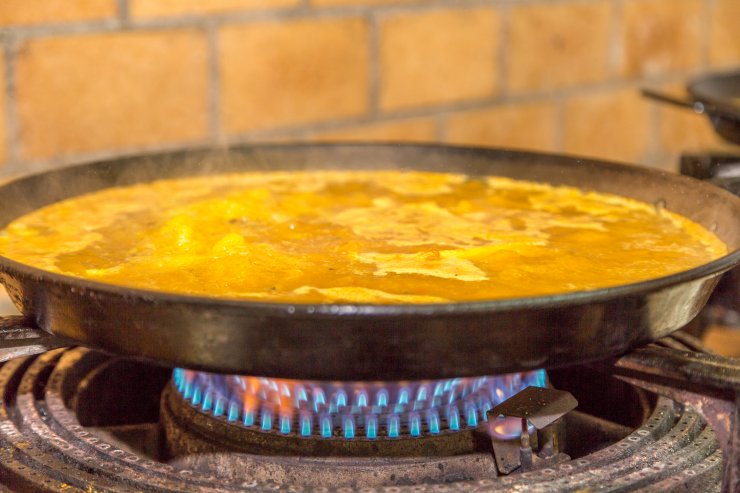
Bullit de peix: traducido literalmente como "pescado hervido", este plato proviene de una época en la que el pescado era abundante y barato y los pescadores pescaban para ellos y sus familias. Sin embargo, las familias del interior de la isla tal vez solo veían a los pescadores de vez en cuando y, cuando lo hacían, era motivo de celebración. Considerado por muchos como EL plato típico de Ibiza, este guiso de pescado y patatas en salsa de ajo, tomate y azafrán se sirve como plato principal en todos los mejores restaurantes tradicionales.
Históricamente se elaboraba con pescados pequeños y con espinas; hoy en día, solo se utilizan ingredientes de la mejor calidad, entre ellos, rape, pez de San Pedro y mero. Algunos restaurantes lo sirven literalmente bañado en alioli, lo cual es una pena porque puede restarle calidad al pescado. Sin embargo, los mejores restaurantes dejan que sea el comensal quien decida la cantidad de alioli que quiere añadir.
El caldo que se produce en la elaboración del bullit de peix se reserva para hacer el plato de acompañamiento arroz a banda, uno de los favoritos del autor, ya que es un plato de arroz sin el jaleo de la paella. No es necesario ensuciarse los dedos, ya que el arroz a banda se prepara normalmente solo con rodajas de calamar, aunque queda aún mejor si se añaden gambas peladas y almejas.
La mejor manera de comerlo es a orillas del mar en alguno de los restaurantes de marisco favoritos de Ibiza, donde traen pescado fresco a diario, como Es Pou de Lleo (un hostal), el aclamado Es Ventall en San Antonio, Es Bigotes en Cala Mastella, El Gallo Viejo en la bahía de San Antonio o el Restaurante Sa Caleta. En el interior, uno de los guardianes de la cocina tradicional ibicenca, S'Espartar, cerca del pueblo de San José, es otro gran lugar para disfrutarlo.
Otros platos locales de mariscos que te recomendamos probar incluyen:
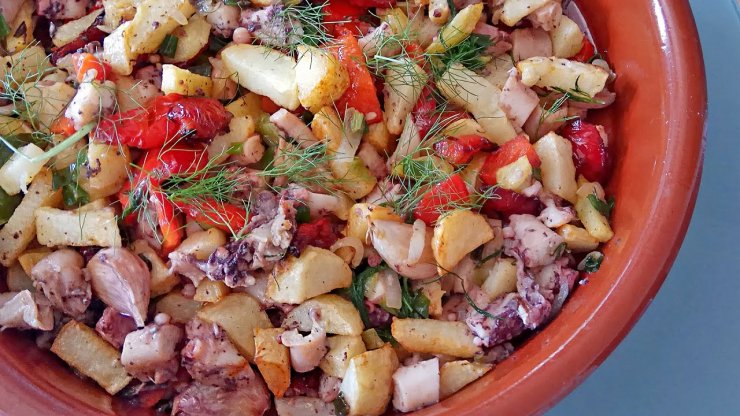
Frito de pulpo o frito de calamares: pulpo o calamares fritos con patatas,

Chipirones: chipirones rebozados y fritos.
Almejas o mejillones en salsa de vino.
Sardinas: ¿Quién puede resistirse a un plato de sardinas frescas asadas a la plancha en la playa? Pruébalas en Tothom en el puerto de San Miguel, en alguno de los restaurantes de Cala Martina, en el Aquarium de San Antonio, en el Fish Shack de Sa Punta, en Talamanca, o en el Bar Can Sulayetas, a las afueras del pueblo de San Miguel.
Aquellos con un presupuesto generoso deberían buscar bogavante o langosta (las dos variedades locales) o cigalas.
Carne
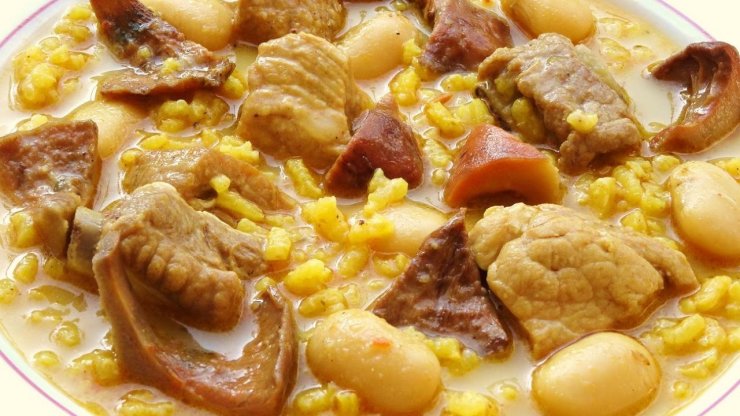
Arroz de matanzas: se trata de una sopa sustanciosa que aprovecha los restos de la matanza del cerdo y se hace con restos de carne de cerdo en caldo, espesada con arroz y verduras. Visita Sa Palmera en Santa Inés en otoño para disfrutar de esta agradable incorporación a la carta de invierno.
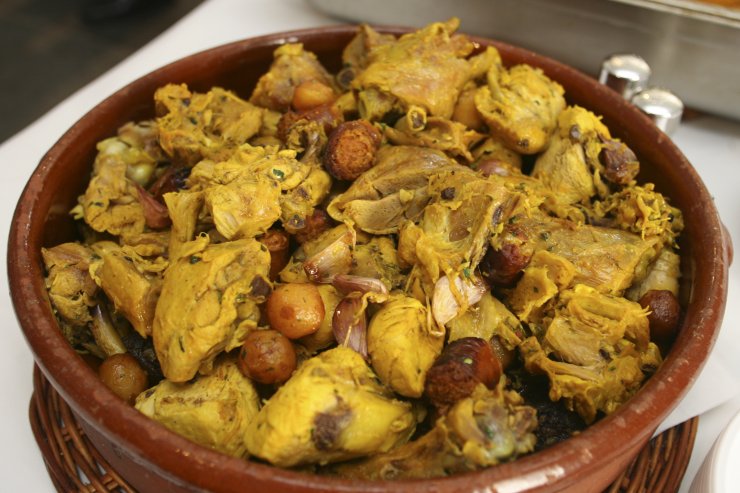
Sofrit pagès: Cocinado para las fiestas y celebraciones más especiales, este plato es un rico guiso de carnes mixtas, principalmente pollo y cordero, pero también cabra o conejo, con embutidos locales (sobrasada y butifarra), patatas y verduras, incluidas las alcachofas. El sofrit se come mejor en invierno, después de las matanzas, cuando los embutidos se consideran de mejor calidad. S'Espartar en San José hace un excelente sofrit pagès, que es muy apreciado por los lugareños.
Ibiza cuenta con una próspera industria del cordero y los admiradores de esta carne deberían probar unas chuletas de cordero joven, siempre repletas de sabor.
A continuación, te proponemos un par de lugares donde los amantes de la carne pueden ir al campo y probar algunos productos locales. Balafia, en la pintoresca carretera a San Juan, sirve deliciosas chuletas de cordero lechal, y Can Caus, en Santa Gertrudis, sirve sus propios productos, incluido cabrito. Por supuesto, hay muchos más lugares que buscar y descubrir.
Postres
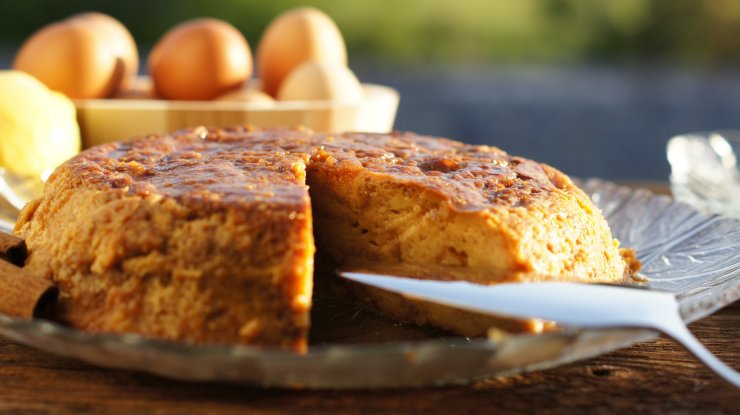
La greixonera se describe probablemente mejor como un pudin de pan con crema caramelizada, elaborado con las ensaimadas que sobraron del día anterior, un dulce local que se suele servir a la hora del desayuno. A veces, este pudin puede tener demasiados huevos, pero un buen pudin es sencillamente delicioso.
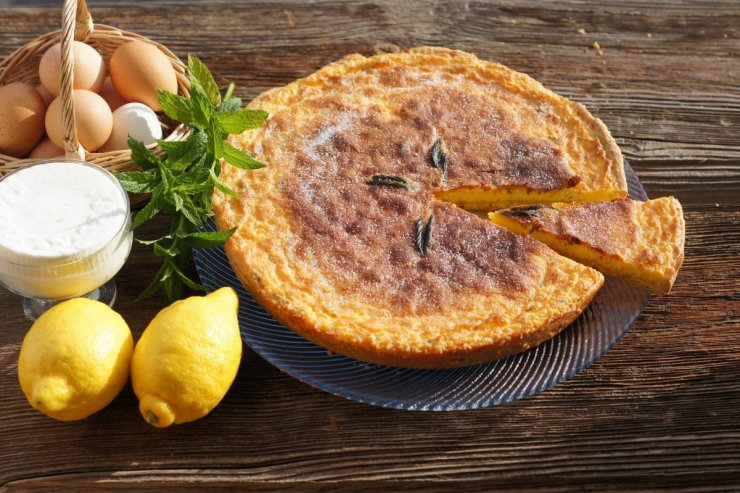
Flaó: un clásico de Pascua que se remonta al siglo XIII, es una tarta de queso densa con un relleno de queso de oveja o de cabra, huevos, azúcar y luego aromatizada con toques de menta, anís y hierbas ibicencas.
Esperamos que puedas probar algunos platos tradicionales locales durante tu visita a Ibiza. Si deseas conocer más sobre la historia culinaria de Ibiza y Formentera o probar productos locales, debes contactar con Ibiza Food Tours y realizar una de sus rutas gastronómicas a pie por la ciudad de Ibiza.
Puede que tengas sed después de todos esos desayunos, meriendas y comidas principales, así que consulta la tercera y última entrega de esta serie sobre bebidas.
Para una gran selección de establecimientos para comer que se adaptan a todos los gustos y presupuestos, dirígete a nuestra guía de restaurantes.
